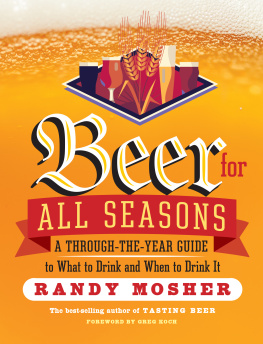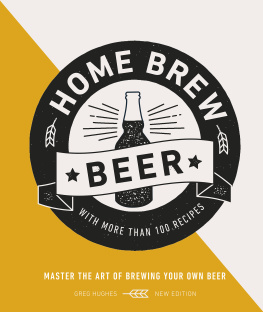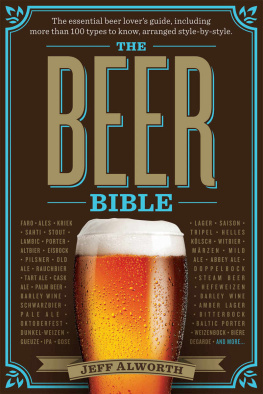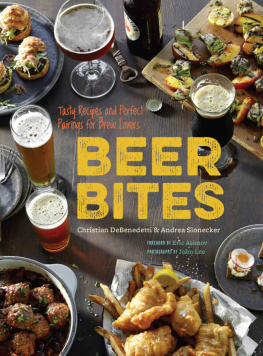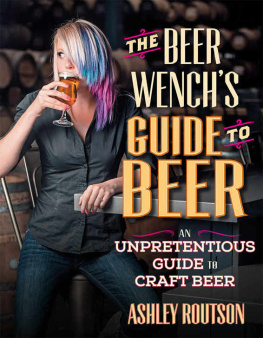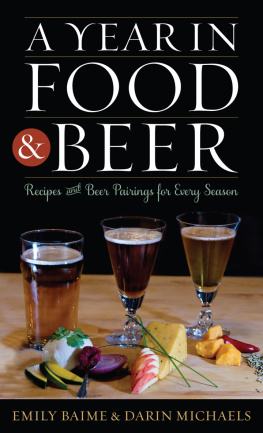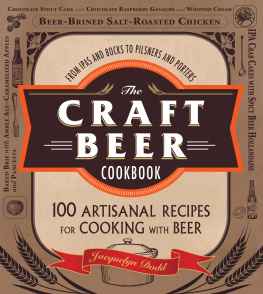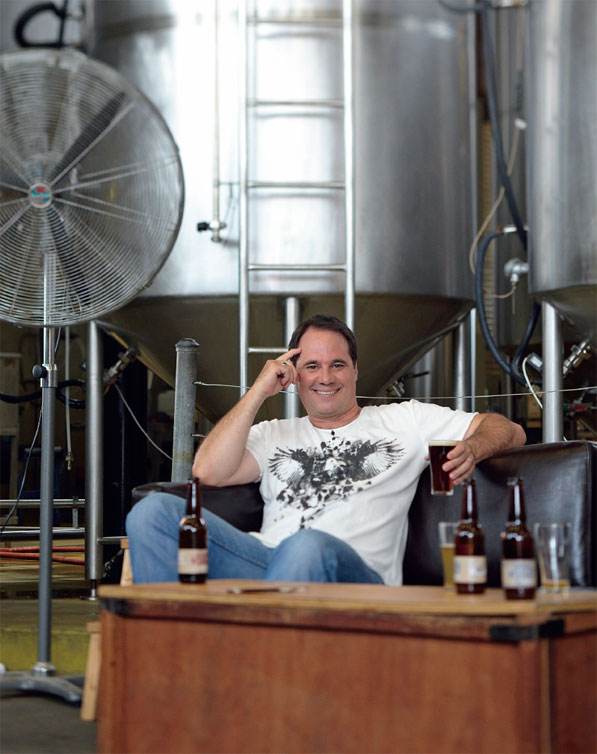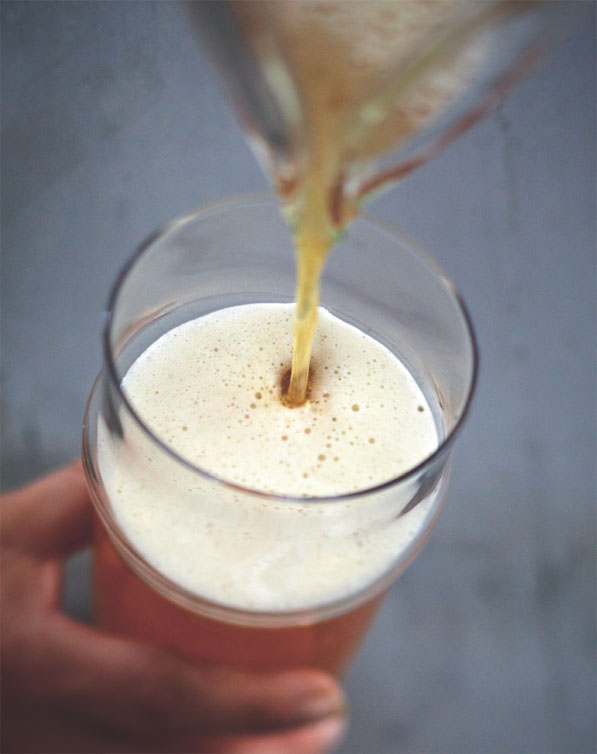Welcome!
Beer has always been seen as a mans drink. Its what the blokes drink around the barbecue as they overcook the steaks while the women are inside sipping chardonnay and making the salads. Its what blokes chug back after mowing the lawn, or use to wash down a pie and sauce at the footy. These great cultural pleasures have been enjoyed for many a year, and long may they live however, times are changing and it is my hope that this book will help to drive the changes even faster.
Thankfully its no longer unusual to go to a bar, a pub or a backyard barbecue and see a group of people men and women all drinking beer. What is unusual is the range of beers they may be drinking; the guys might be drinking amber ale, English bitter, a double India pale ale or a Belgian wit and the women might be enjoying a Klsch, a sparkling ale or an Austrian pilsner. On the menu will be anything gourmet from sausages, pizza, terrines or paella to weird and wonderful dips and cheeses. We now have a wide variety of great produce available to us and that means people are now looking for, asking for and wanting flavour. In Australia we have well over one hundred micro-breweries around the country, all making great beers with their own unique flavours.
Beer has changed and so has the way people look at beer. It is no longer the cheap and relatively tasteless mega-swill that you drink just because your dad did and his dad before him. It is now a considered part of a dinner party, a family function or a good night out. Pubs and restaurants are now matching beers to the dishes on their menus something the micro-breweries have been doing for years. Boutique bars serving only micro-brewed and specialty beers are springing up all over the country and beer dinners are starting to become commonplace.
Better still, the use of beer as a cooking ingredient has finally moved beyond the ubiquitous beer-battered fish and chips. Dont get me wrong, I love beer-battered fish and chips and have it often, but nowadays I match the beer in the batter to the fish or seafood I am cooking a pilsner for prawns (shrimp), sparkling ale for flake, and stout for mussels or oysters. The combinations and possibilities are endless, and the world of beer and food is well, its your oyster (Oyster Stout of course!).
Beer has finally come of age as a sophisticated beverage that both men and women are enjoying in greater numbers than ever before. It has a well-deserved and unique place on the table at home, in the restaurant, by the barbecue and in the dish being served.
When I told people I was writing a beer cookbook their general reaction was to say how much their husband, boyfriend or son would love it, and I hope they do I hope wives, girlfriends and sisters buy it in the thousands for their loved ones. However, my aim in writing this book was to write it for men and women alike who share my love for a fine lager or ale and, importantly, for people who like good food. I have cooked all the dishes in this book and I have fed them to my wife, my daughters, my mum, my in-laws, my friends, my childrens friends, my butcher, my bank manager, my bottle shop attendant and many others. I am glad to say they all loved the dishes!
The key to cooking with beer is to create really good dishes that stand on their own, are well balanced, well flavoured and dont taste like beer. If every dish in this book tasted like beer there would be no point in writing more than one recipe. Beer is but one ingredient and it must work in a harmonious and complementary way with all the other ingredients.
Beer in itself is a unique drink, but used as an ingredient in a recipe it will add all sorts of wonderful complexity to a dish. There are eighty-seven recognised beer styles in the world, each with its own flavour profile and nuance. There are thousands of breweries around the globe making these styles, and each brewery has its own unique character that it imparts into their beers.

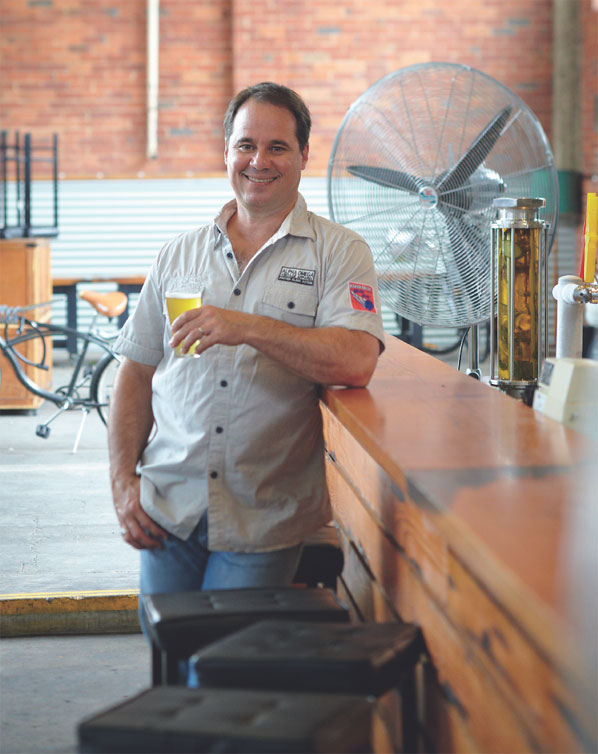
For instance, pilsner is the most prolific beer style and is made by almost every country in the world, but if you did a side-by-side tasting of pilsners from China, Japan, Austria, Australia, Canada, the United States, Malaysia and the Philippines, you would be amazed by the differences between them. Try a side-by-side tasting of Australian-made pilsners only and again you would be amazed at the differences. See what I mean about complexity? So when you use beer in your cooking you have an incredible amount of choice, subtlety and flavour profiles to experiment with. Therefore the key to making a really good dish is to choose an appropriate beer with the flavour nuances that will best suit the dish.
How best do you do this? Taste lots of beers! One size does not fit all, so theres no point in using your favourite beer in all the recipes in this book. You can if you want to the recipes will work but you will be missing out on some wonderful and unique characteristics brought to these recipes by the specific styles of beer I have used. Experiment and have fun cooking with beer is an adventure and one Im sure you will enjoy! I certainly do!
Cheers,
Paul
Beer is made using malted barley, hops, water and yeast. To those ingredients, depending on the style of the beer, you can add rice, corn, malted and unmalted wheat, different sorts of sugars, and even fruits. For instance the big Belgian high-alcohol style of beer often uses candy sugar to add to its flavour profile, and again in Belgium they add fruit to a special brew called a lambic to create a fruit-driven effervescent beer. Essentially you will find that your friendly boutique micro-brewer is sticking to the traditional method of using just the four main ingredients I mentioned first.
To make a beer you steep malted barley (grain) in warm water for about an hour this is known as the mash. The temperature of the water will affect the body quality and mouth-feel of the finished beer. During the mash the starches in the grain are converted into fermentable and non-fermentable sugars. Once this conversion has happened, the grain is rinsed (or sparged, in brewing talk) so that all the sugars in the grain are rinsed out, and the sparging liquid (now called wort pronounced wert) is then transferred to a kettle. (The spent grain from the mash is often picked up by farmers, who feed it to their cows.) The wort is boiled vigorously for about an hour, to get rid of any undesirables in the liquid that can cause problems with the beer later on. At various times throughout the boil, hops are added. Hops do several things for beer they add aroma and flavour; they add bitterness; and they help to preserve the beer. There are more than seventy varieties of hops grown around the world, with more being developed every year. Each has its own distinctive flavour and character.
Once the wort has boiled for an hour and the hop additions have been made, the liquid is pumped through a chiller into a fermenter, where the yeast is added. The yeasts sole function is to eat the fermentable sugars in the wort. During this process the yeast produces vital by-products, excreting (for want of a better term) carbon dioxide and alcohol this process is called fermentation and usually takes five to seven days depending on the beer you are making. Once fermentation is finished, the beer may or may not be filtered and pasteurised, depending on the brewery and the style of the beer, and then it is either bottled or put in kegs and is ready to drink.


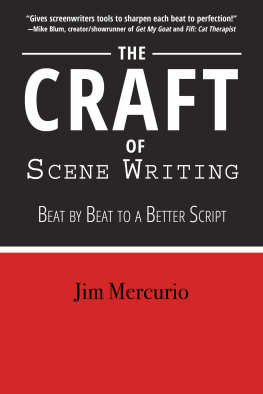
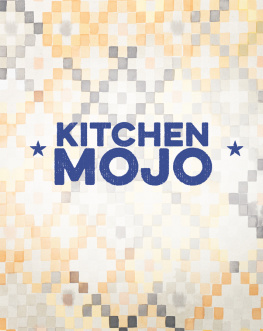
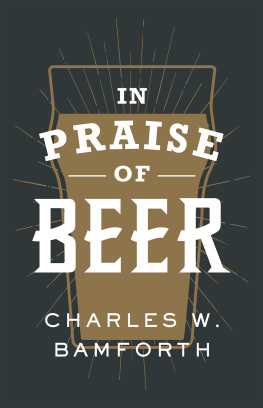
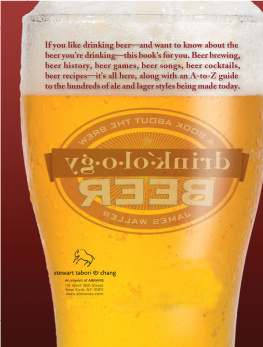
![Willis - Beer: a cookbook: good food made better with beer: [recipes]](/uploads/posts/book/224368/thumbs/willis-beer-a-cookbook-good-food-made-better.jpg)
